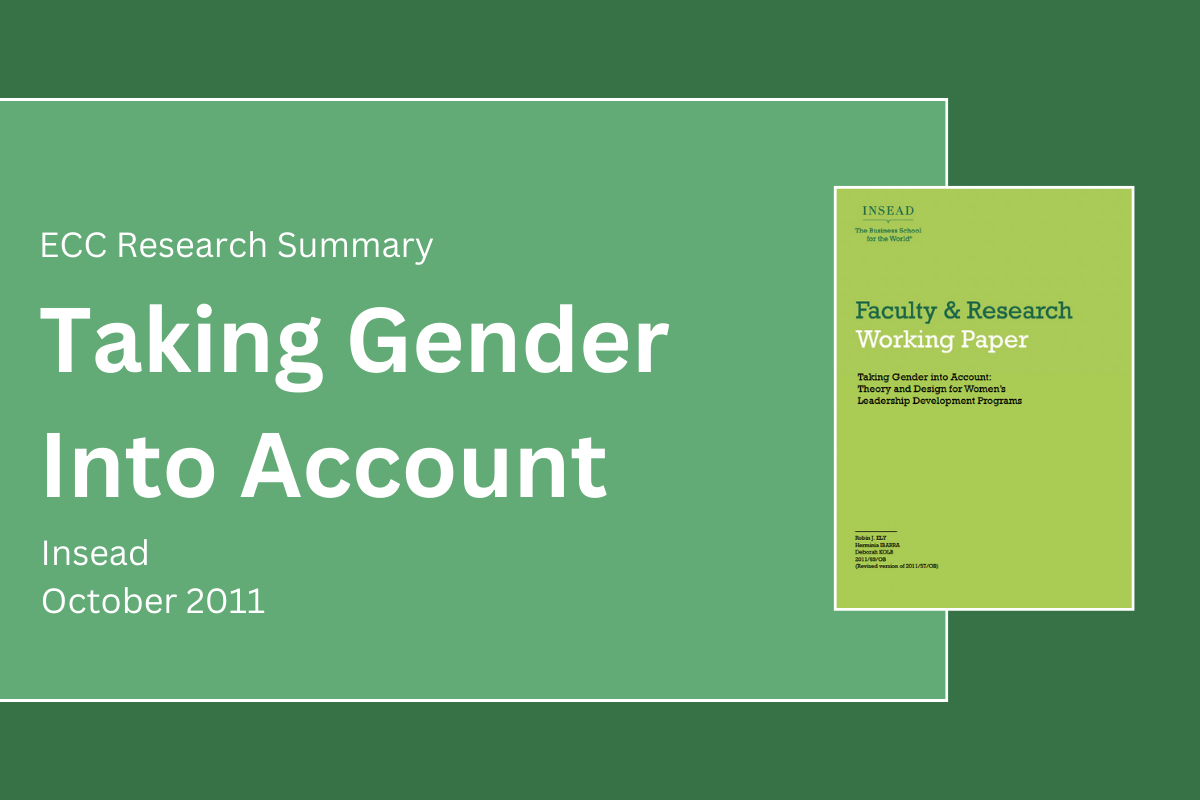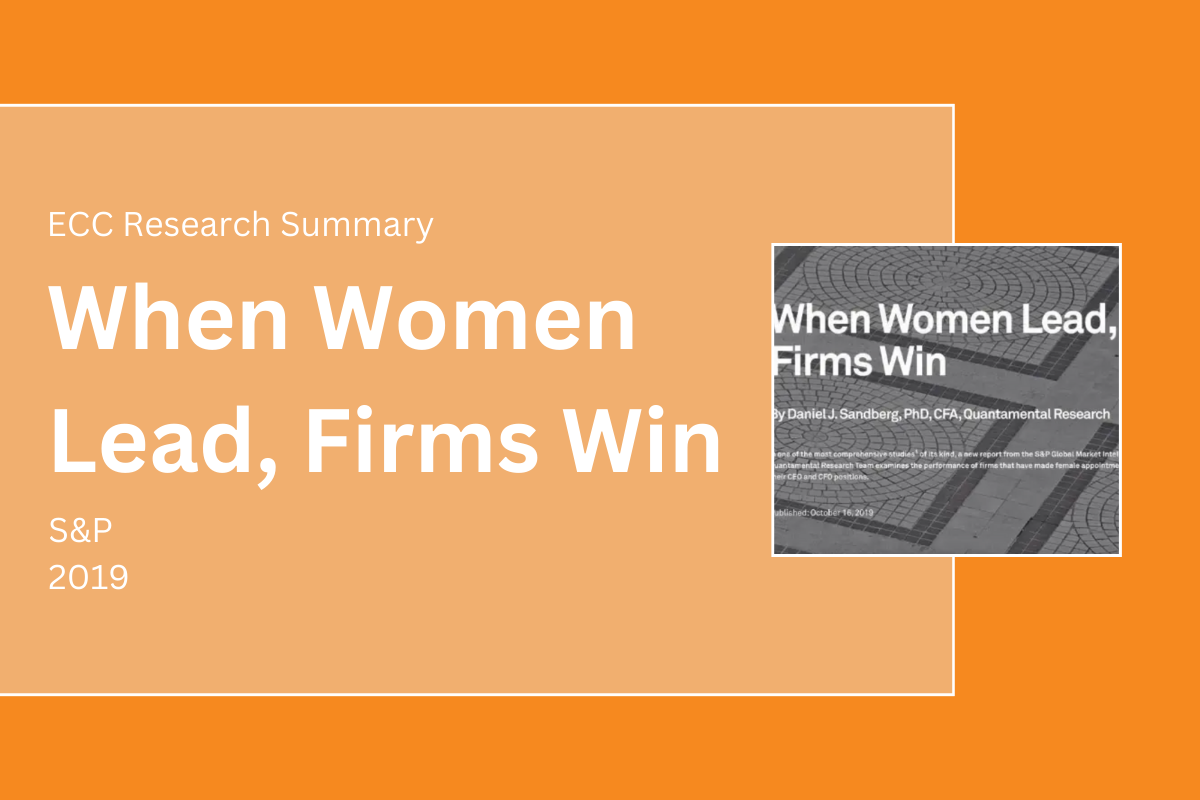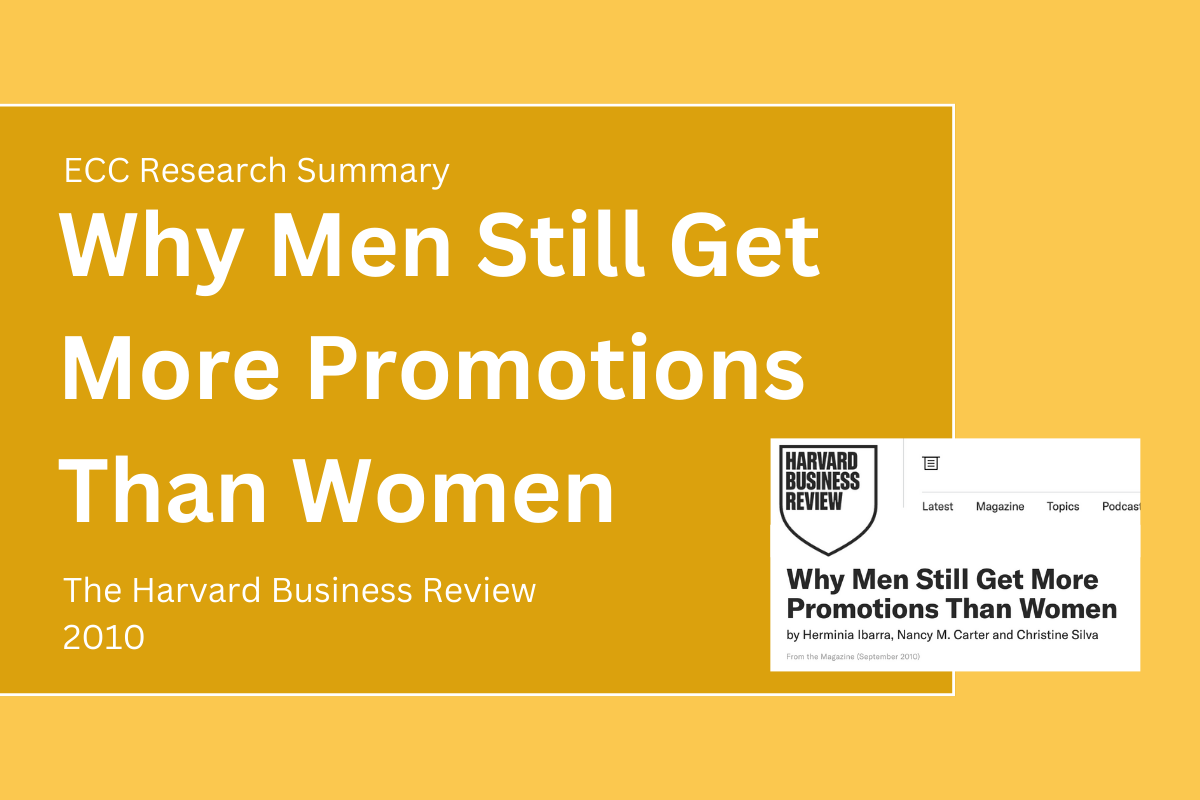3 min read
Taking Gender into Account Summary
A Summary of the Workplace Biases Women Face Leadership programmes have become a key component of the development opportunities major...
Insights to help leaders and organisations thrive and drive growth & inclusion.
Geraldine Gallacher Keynote Speaker
Speaker, podcaster, author and master coach.
Our resource hub for working parents, carers and managers navigating work-life balance.
Real stories from leaders driving inclusion & equity in today’s shifting world.
Fortnightly insights on leadership, equity & the future of work. For senior leaders & curious thinkers.
A monthly digest of the shifts shaping how we lead and work.
2 min read
 Phoebe Rees | Research & Impact Manager
:
Sep 9, 2024 12:00:00 AM
Phoebe Rees | Research & Impact Manager
:
Sep 9, 2024 12:00:00 AM

Despite the strong performance of women in the workplace, their progression into senior roles continues to lag. To uncover why this gap persists, Benson, Li, and Shue conducted an extensive study using over 30,000 managerial evaluations from global organisations, analysing how men and women are rated on both performance and potential. These evaluations were structured using the widely adopted "Nine Box" framework, a talent rating system used by firms to identify and fast-track future leaders.
The researchers found a striking trend: while women consistently received higher ratings for performance, they scored low on potential. This discrepancy significantly impacted women’s careers, as potential scores directly informed their likelihood of promotion, far more than performance. This meant that many high-achieving women were routinely passed over for progression, in favour of men with lower performance but higher potential scores.
This pattern wasn’t driven by actual differences in ability or ambition. The research showed that women with lower potential ratings often outperformed their male counterparts in subsequent roles and were less likely to leave the firm. Proving that the issue wasn’t their talent, it was how their future leadership capability was being assessed.
The Gender Bias in Potential Ratings
The study found that women were being systemically underestimated. The “potential” rating was where bias crept in most strongly. Unlike performance, which could be tracked and measured, ‘potential’ relied too much on gut feel and manager perception, often vulnerable to each individual’s unconscious biases and gendered ideas of leadership.
Even when women proved themselves over time, their potential ratings failed to catch up. This persistence of low potential scores suggests a broken feedback loop: women's actual success didn’t lead to better future evaluations.
The Cost of the Nine Box
These flawed assessments had tangible impacts. The study concluded that up to 50% of the gender promotion gap could be explained by lower potential scores assigned to women. Because the Nine Box heavily weights potential, this meant that talented women remained stuck in place while men with similar or even lower capabilities rose through the ranks.
Fixing the Promotion Gap: Rethinking Potential
To truly support high-potential women, organisations must scrutinise how potential is defined and measured. This research suggests moving away from subjective evaluations towards more evidence-based indicators of leadership capability. Unconscious bias training will not address the problem, organisations need to build accountability into their talent processes, ensuring that future assessments reflect actual performance and provide equal pathways for advancement.
To find out more about women’s development and career progression, visit:
Women’s Progression in the Workplace
Click here to learn more about the research-inspired: ‘The Overlooked’

The Double Bind is the stigma women face when they pursue leadership: they become stuck between a rock and a hard place, locked into a bind. Click here to find out more.

Second Generation Bias is a form of discrimination women experience in the workplace. It is more subtle and typically perpetuated through stereotypes and organisational systems. Click here to find out more.

The Glass Ceiling is the unseen barriers that prevent women from reaching senior leadership positions, particularly in corporate workplaces. Click here to find out more.

3 min read
A Summary of the Workplace Biases Women Face Leadership programmes have become a key component of the development opportunities major...

The Ongoing Gap in Senior Leadership Representation

2 min read
A Summary of Why Men Still Get Promoted More than Women Despite the significant number of high-potential women in full-time employment, looking at...